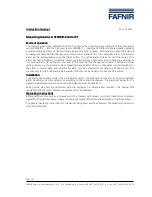
TK-3202
9
■
Encode Signaling
• QT/DQT
QT, DQT data of the QTTCXO Line is output from pin 28 of
the CPU. The signal passes through a low-pass CR filter and
goes to the TCXO (X1).
The QT, DQT data of the QTVCO Line is output from pin
24 of the CPU. The signal passes through a low pass CR
filter, mixes with the audio signal, and goes to the VCO
modulation input. TX deviation is adjusted by the CPU.
5. Power Supply
There are four 5V power supplies for the microprocessor:
5M, 5C, 5R, and 5T.
5M for microprocessor is always output while the power
is on. 5M is always output, but turns off when the power is
turned off to prevent malfunction of the microprocessor.
5C is a common 5V and is output when SAVE is not set to
OFF.
5R is 5V for reception and output during reception.
5T is 5V for transmission and output during transmission.
6. Control Circuit
The control circuit consists of a microprocessor (IC405)
and its peripheral circuits. It controls the TX-RX unit. IC405
mainly performs the following:
(1) Switching between transmission and reception by the
PTT signal input.
(2) Reading system, group, frequency, and program data
from the memory circuit.
(3) Sending frequency program data to the PLL.
(4) Controlling squelch on/off by the DC voltage from the
squelch circuit.
(5) Controlling the audio mute circuit by the decode data in-
put.
(6) Transmitting tone and encode data.
■
Frequency Shift Circuit
The microprocessor (IC405) operates at a clock of 7.3728
MHz. This oscillator has a circuit that shifts the frequency by
BEAT SHIFT SW (Q407, Q408).
A beat sound may be able to be evaded from generation if
“Beat Shift” is set to ON when it is generated in the internal
spurious transmission modulated sound of a transceiver.
■
Memory Circuit
Memory circuit consists of the CPU (IC405) and an
EEPROM (IC406). An EEPROM has a capacity of 64k bits
that contains the transceiver control program for the CPU and
data such as transceiver channels and operating features.
Q407
Q408
Hi: OFF
Low: ON
X2
XOUT
BSHIFT
IC405
Fig. 8
Frequency shift circuit
CPU
IC405
EEPROM
IC406
Fig. 9
Memory circuit
■
Low Battery Warning
The battery voltage is checked using by the microproces-
sor.
The transceiver generates a warning tone when it falls
below the warning voltage shown in the table.
(1) The red LED blinks when the battery voltage falls below
the voltage (1) shown in the table during transmission.
Note:
The transceiver checks the battery voltage during recep-
tion even when, in the FPU, the Battery Warning status
function is set to “On TX” (default setting).
However, the LED does not blink during reception. During
transmission, the LED blinks to generate the warning tone
of a low battery voltage.
(2) The transceiver immediately stops transmission when the
battery voltage falls below the voltage (2) shown in the
table. A message tone beeps while the PTT switch is re-
leased.
Ni-Cd Battery
Ni-MH Battery
(1)
6.2V
6.2V
(2)
5.9V
5.9V
Fig. 10
Low battery warning
IC405
CPU
88
R404
R406
SB
CIRCUIT DESCR
I
PTION











































